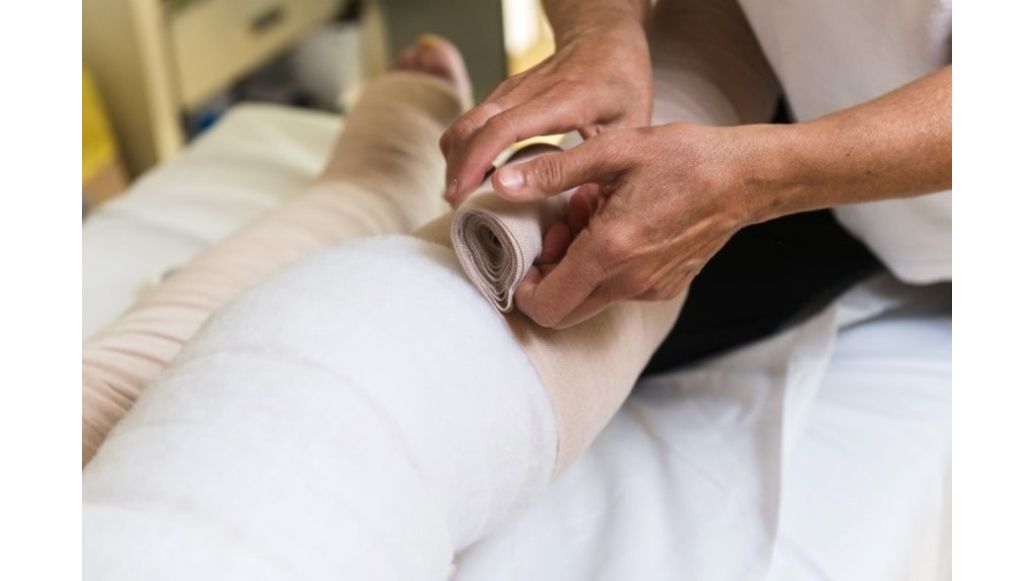Lymphedema occurs when your lymphatic system is damaged. This is commonly caused by cancer treatments such as surgery and radiation. While there is no cure, with the appropriate management, lymphedema’s major symptoms, namely swelling and the risk of infection, can be improved and controlled.
What Won’t Help: Diuretics
Because lymphedema is not a swelling due to excess water, but an abnormal accumulation of lymph fluid, diuretics (water pills) do not help reduce swelling. Instead, complete decongestive therapy is used. Find out more about the differences is lymphedema vs. edema here.
CDT (Complete Decongestive Therapy)
Benefits
Experts who manage lymphedema consider CDT the “gold standard” of lymphedema management. This is due to its effectiveness at reducing swelling and improving their patient’s quality of life. There are several positive effects of using this therapy. In addition to decreasing swelling and increasing lymph fluid drainage, it relieves discomfort. The therapy also reduces skin fibrosis, the thickening and scarring of connective tissue. This improves the skin condition. All of this makes it easier to perform daily tasks.
Components of CDT
Manual lymphatic drainage is usually the first step in managing lymphedema. This technique uses a special massage to move lymph fluid around blocked areas to help reduce swelling. Additionally, compression is used to help reduce the excess fluid build up. Multi-layer, short stretch compression bandaging comes in several forms such as short-stretch bandaging or compression garments. Another part of CDT is exercise, lymphatic exercises are usually light or remedial exercises specially used to help manage lymphedema. It’s important to practice proper skin care and follow a healthy diet to prevent infection and reduce swelling.
What You Should Know About Compression
Compression garments (graduated compression hosiery and arm sleeves) will not reduce swelling by themselves and must not be worn on an swollen extremity that has not been decongested. Patients with lymphedema graduate from bandages to compression garments once the limb is decongested using manual lymphatic drainage. Short stretch bandages have advantages over elastic garments because they force a higher working pressure and greater muscle pump efficiency.
Compression Bandaging (or Multi-Layer Bandaging)
Compression bandaging refers to a specific technique utilizing multiple layers of several materials to create safe and effective gradient compression. This helps reduce swelling caused by lymphedema. There are several necessary components of compression bandaging that protect your skin and apply compression.
- The first layer in multi-layer bandaging, used for skin protection
- Seamlessly knit tubular bandage
- Absorbs perspiration and excess moisture
- Barrier between the skin and bandaging layers for increased comfort
- Conforming bandages for the fingers and toes, bandaged even if they don’t show signs of edema to prevent it from spreading
- White elastic knit bandage
- Ideal for wrapping fingers, toes, and genitals
- Comfortable and conforms well to body contours
- Cushioning helps distribute pressure to prevent constrictions and painful pressure spots
- Reshapes limb to a cylindrical shape
- For maximum cushioning in skin creases or bony prominences
- Can be used in a double or triple layer
- Premade or custom cut foam pads to compensate for unevenness in body contours
- Results in more even pressure distribution
- Used around the ankles and wrists
- Helps achieve localized pressure in fibrotic tissue areas
- Have a more limited stretch ability when pulled and prevents the uneven binding and constricting that can happen with an ACE bandage
- Applies gentle and consistent pressure against the skin when several layers are wrapped
- Provides a surface for the muscles to press against to enhance the pumping action
- Assists in pumping excess fluid out of the affected area and reduces swelling
- For securing layers of bandaging
- Secures foam and bandage layers
- Ensures layers stay in place and don’t bunch up
- Keeps short-stretch bandages in place when you’ve finished wrapping
This multi-step bandaging process can be frustrating at first, but it gets easier over time. Be patient with yourself as you learn this new skill and begin to manage your lymphedema. There are several compression bandaging kits available to make buying your supplies easier.
References
Lohmann and Rauscher USA. (n.d.). Lymphedema. Retrieved from https://bit.ly/2EuKtAp
Norton School (n.d.). Compression Therapy. Retrieved from https://bit.ly/2HqLNHX
Medical Disclaimer: The information provided on this site, including text, graphics, images and other material, are for informational purposes only and are not intended to substitute for professional medical advice, diagnosis or treatment. Always seek the advice of your physician or other healthcare professional with any questions or concerns you may have regarding your condition.








 France
France Australia
Australia



